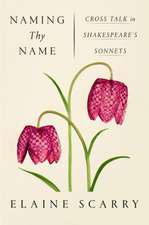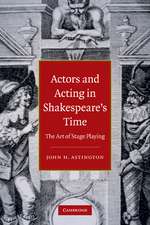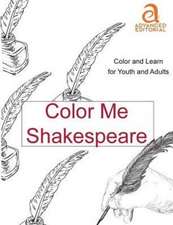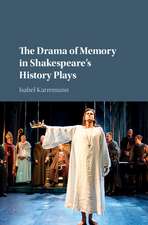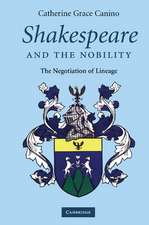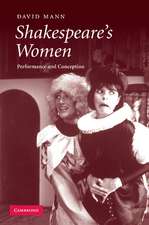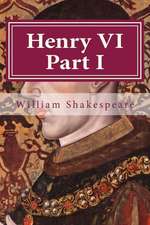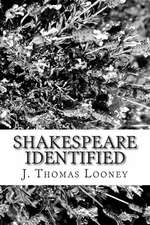The Poems: Bantam Classics
Autor William Shakespeare Fotografii de David M. Bevingtonen Limba Engleză Paperback – 31 dec 1987
Shakespeare’s greatest achievement in nondramatic verse was his collection of 154 magnificent sonnets that portray a tumultuous world of love, rivalry, and conflict among a poet, an aristocratic young man, a rival poet, and a mysterious “dark lady.” More profound than other Elizabethan sonnet sequences and never surpassed as archetypes of the form, these poems explore almost every imaginable emotional complexity related to love and friendship. Some poems are dark, bitter, and self-hating, others express idealism with unmatchable eloquence–and all are of quintessential beauty, part of the world’s great literary heritage.
In addition to his sonnets, Shakespeare published two long poems early in his career: Venus and Adonis and The Rape of Lucrece. Immediately popular in Shakespeare’s time, they display a richness that can also reward us with insights into the powerful imagery of his plays.
Rounding out this volume are two minor poems, “A Lover’s Complaint” and “The Phoenix and Turtle,” thought to be part of Shakespeare’s early writings.
| Toate formatele și edițiile | Preț | Express |
|---|---|---|
| Paperback (4) | 44.30 lei 3-5 săpt. | |
| Bantam Classics – 31 dec 1987 | 44.30 lei 3-5 săpt. | |
| Bloomsbury Publishing – 27 sep 2007 | 76.01 lei 3-5 săpt. | +27.65 lei 7-13 zile |
| Cambridge University Press – 31 mai 2006 | 86.34 lei 3-5 săpt. | |
| Cambridge University Press – 19 iul 2009 | 282.47 lei 6-8 săpt. | |
| Hardback (1) | 480.07 lei 6-8 săpt. | |
| Cambridge University Press – 31 mai 2006 | 480.07 lei 6-8 săpt. |
Din seria Bantam Classics
-
 Preț: 39.98 lei
Preț: 39.98 lei -
 Preț: 35.46 lei
Preț: 35.46 lei -
 Preț: 32.91 lei
Preț: 32.91 lei -
 Preț: 33.77 lei
Preț: 33.77 lei -
 Preț: 29.86 lei
Preț: 29.86 lei -
 Preț: 32.09 lei
Preț: 32.09 lei -
 Preț: 34.03 lei
Preț: 34.03 lei -
 Preț: 36.91 lei
Preț: 36.91 lei -
 Preț: 31.42 lei
Preț: 31.42 lei -
 Preț: 30.66 lei
Preț: 30.66 lei -
 Preț: 36.04 lei
Preț: 36.04 lei -
 Preț: 27.22 lei
Preț: 27.22 lei -
 Preț: 42.88 lei
Preț: 42.88 lei -
 Preț: 33.19 lei
Preț: 33.19 lei -
 Preț: 38.76 lei
Preț: 38.76 lei -
 Preț: 36.63 lei
Preț: 36.63 lei -
 Preț: 41.84 lei
Preț: 41.84 lei -
 Preț: 33.60 lei
Preț: 33.60 lei -
 Preț: 31.26 lei
Preț: 31.26 lei -
 Preț: 32.08 lei
Preț: 32.08 lei -
 Preț: 42.06 lei
Preț: 42.06 lei -
 Preț: 35.46 lei
Preț: 35.46 lei -
 Preț: 32.53 lei
Preț: 32.53 lei -
 Preț: 40.01 lei
Preț: 40.01 lei -
 Preț: 39.17 lei
Preț: 39.17 lei -
 Preț: 51.30 lei
Preț: 51.30 lei -
 Preț: 33.35 lei
Preț: 33.35 lei -
 Preț: 34.83 lei
Preț: 34.83 lei -
 Preț: 40.59 lei
Preț: 40.59 lei -
 Preț: 37.51 lei
Preț: 37.51 lei -
 Preț: 33.60 lei
Preț: 33.60 lei -
 Preț: 39.55 lei
Preț: 39.55 lei -
 Preț: 39.66 lei
Preț: 39.66 lei -
 Preț: 28.61 lei
Preț: 28.61 lei -
 Preț: 46.77 lei
Preț: 46.77 lei -
 Preț: 28.04 lei
Preț: 28.04 lei -
 Preț: 37.92 lei
Preț: 37.92 lei -
 Preț: 47.89 lei
Preț: 47.89 lei -
 Preț: 34.42 lei
Preț: 34.42 lei -
 Preț: 44.52 lei
Preț: 44.52 lei -
 Preț: 32.64 lei
Preț: 32.64 lei -
 Preț: 35.89 lei
Preț: 35.89 lei -
 Preț: 34.01 lei
Preț: 34.01 lei -
 Preț: 31.96 lei
Preț: 31.96 lei -
 Preț: 31.31 lei
Preț: 31.31 lei -
 Preț: 39.57 lei
Preț: 39.57 lei -
 Preț: 58.13 lei
Preț: 58.13 lei -
 Preț: 33.05 lei
Preț: 33.05 lei -
 Preț: 48.85 lei
Preț: 48.85 lei
Preț: 44.30 lei
Nou
Puncte Express: 66
Preț estimativ în valută:
8.48€ • 8.85$ • 7.02£
8.48€ • 8.85$ • 7.02£
Carte disponibilă
Livrare economică 14-28 martie
Preluare comenzi: 021 569.72.76
Specificații
ISBN-13: 9780553213096
ISBN-10: 0553213091
Pagini: 528
Dimensiuni: 106 x 176 x 31 mm
Greutate: 0.25 kg
Ediția:Adnotată
Editura: Bantam Classics
Seria Bantam Classics
ISBN-10: 0553213091
Pagini: 528
Dimensiuni: 106 x 176 x 31 mm
Greutate: 0.25 kg
Ediția:Adnotată
Editura: Bantam Classics
Seria Bantam Classics
Notă biografică
William Shakespeare was born in Stratford-upon-Avon in April 1564, and his birth is traditionally celebrated on April 23. The facts of his life, known from surviving documents, are sparse. He was one of eight children born to John Shakespeare, a merchant of some standing in his community. William probably went to the King’s New School in Stratford, but he had no university education. In November 1582, at the age of eighteen, he married Anne Hathaway, eight years his senior, who was pregnant with their first child, Susanna. She was born on May 26, 1583. Twins, a boy, Hamnet ( who would die at age eleven), and a girl, Judith, were born in 1585. By 1592 Shakespeare had gone to London working as an actor and already known as a playwright. A rival dramatist, Robert Greene, referred to him as “an upstart crow, beautified with our feathers.” Shakespeare became a principal shareholder and playwright of the successful acting troupe, the Lord Chamberlain’s Men (later under James I, called the King’s Men). In 1599 the Lord Chamberlain’s Men built and occupied the Globe Theater in Southwark near the Thames River. Here many of Shakespeare’s plays were performed by the most famous actors of his time, including Richard Burbage, Will Kempe, and Robert Armin. In addition to his 37 plays, Shakespeare had a hand in others, including Sir Thomas More and The Two Noble Kinsmen, and he wrote poems, including Venus and Adonis and The Rape of Lucrece. His 154 sonnets were published, probably without his authorization, in 1609. In 1611 or 1612 he gave up his lodgings in London and devoted more and more time to retirement in Stratford, though he continued writing such plays as The Tempest and Henry VII until about 1613. He died on April 23 1616, and was buried in Holy Trinity Church, Stratford. No collected edition of his plays was published during his life-time, but in 1623 two members of his acting company, John Heminges and Henry Condell, put together the great collection now called the First Folio.
Extras
Introduction
Most of Shakespeare’s nondramatic poems were written early in his career. As a young man in London in the early 1590s, he did what any aspiring writer naturally would do: turned to the writing of amatory poetry, sonnets, and edifying verse narratives in the prevailing genres of the time. Here was the pathway to literary recognition and, one might hope, to the patronage of some influential and generous member of the aristocracy. Shakespeare soon found employment as an actor and writer of plays and no doubt took comfort in his success in the theatrical world; but writing plays then was somewhat like writing movie or television scripts today, often remunerative but usually anonymous. Play scripts were regarded as subliterary; when, some years later, Ben Jonson had the temerity to publish his plays as operae, or works, his critics were unsparing in their ridicule of one who confused “works” with “plays.” Sonnets and Ovidian amatory verse, on the other hand, were generally recognized as “serious” literary forms.
Cultivated young gentlemen at the Inns of Court, purportedly studying law there but often spending a good deal of their time in literary pursuits, contributed plentifully to the vogue in sonnets, satires, love lyrics, and the like. (John Donne was such a student at the Inns of Court in the late 1590s.) Other aspiring or already recognized writers, including Sir Philip Sidney, Edmund Spenser, Christopher Marlowe, Michael Drayton, Samuel Daniel, Thomas Lodge, and, later in the 1590s, John Marston, Sir John Davies, George Chapman, and Ben Jonson, some of whom were also playwrights, made their mark by writing nondramatic poetry. The classical model provided by such poets as Ovid, Virgil, and Horace added to the sense of propriety the poems in beginning a literary career with the writing of certain kinds of poems such as the eclogue.
Perhaps some enforced leisure in his acting and playwriting
career, unwelcomely provided by severe outbreaks of the plague during warmer months in the early 1590s, gave Shakespeare added opportunity and incentive to turn to the writing of nondramatic verse. At any rate, he wrote “Venus and Adonis”, an amatory and even decorously erotic poem in the vein of Ovid, for publication in 1593, carefully seeing it through the press of his Stratford acquaintance Richard Field and assiduously dedicating it to Henry Wriothesley, the young Earl of Southampton. “The Rape of Lucrece” followed in 1594, also from Field’s press and also dedicated to Southampton, the dedication on this occasion expressing an increasing sense of confidence and fondness between poet and patron. Whether Southampton substantially assisted Shakespeare in his career we do not know, but that
Shakespeare had hopes from this sponsorship seems clear from his way of addressing his aristocratic friend.
Are the sonnets also addressed to Southampton? Although
the identity of the friend addressed in Shakespeare’s sonnets cannot be assigned with certainty, Southampton is inevitably a likely candidate–young, influential in literary circles, handsome, unmarried until 1598, belonging to a family that no doubt wished to see him settle down with the right wife and beget heirs. It may, however, be mere coincidence that his initials, H. W. (Henry Wriothesley), are the reverse of the mysterious “Mr. W. H.” named in the dedication as “the only begetter” of these sonnets. Perhaps the situation described in the sonnets is not autobiographical. At any rate, many if not most of the sonnets must have been written fairly early in Shakespeare’s career, when the sonnet form was in vogue. They were not published until 1609, and even then seemingly without Shakespeare’s authorization or cooperation, but they were evidently circulated in manuscript among knowledgeable readers, and in fact two of them (138 and 144) made their way into print in 1599, seemingly without Shakespeare’s authorization, in a volume published by William Jaggard called The Passionate Pilgrim. The sonnets are so extraordinarily fine that we can only wonder at Shakespeare’s reluctance or indifference toward publishing, but he may have felt that they were personal, or that the sonnet vogue was past by the time he had written most of them, or that it was the gentlemanly thing to be offhand
about publication. (Many of Donne’s songs and sonnets were
privately circulated in much the same manner some time before they were put into print.) We cannot be sure that the order of the sonnets reflects Shakespeare’s final intentions in the matter, since he did not see them through the press, but the overall impression is remarkably cohesive and belies most scholarly efforts to rearrange or disintegrate them.
“The Phoenix and Turtle” and “A Lover’s Complaint,” published in 1601 and 1609 respectively as parts of volumes largely devoted to other materials and printed seemingly without Shakespeare’s cooperation, are probably also early in date of composition, though nothing is known about the circumstances that might have produced them, and the assertion of Shakespeare’s authorship is still uncertain though very likely in both cases.
Other nondramatic poems sometimes included in complete collections of Shakespeare’s poetry are less certainly vouched for and have been omitted here as of too tenuous a connection to merit inclusion. William Jaggard’s The Passionate Pilgrim, 1598, mentioned above because it printed two sonnets (l38 and 144) some nine years before the sonnets were published as a group, also pirated three lyric passages from act 4 of “Love’s Labor’s Lost” published in that same year (1598). Except for minor textual variants, these texts simply reproduce material available elsewhere in the Shakespeare canon. Plainly Jaggard was capitalizing on Shakespeare’s growing reputation by attributing “The Passionate Pilgrim” entirely to him, and doing so most irresponsibly, for a number of poems in the slim volume are manifestly not by Shakespeare at all. Poem 11 of the twenty or twenty-one poems in the volume (number 14 appears as one poem in the original text but is sometimes divided by modern editors) is a sonnet from Bartholomew Griffin’s Fidessa More Chaste Than Kind (1596), and 4, 6, and 9 are so closely related to it in subject and style that they seem part of a sequence. The obvious resemblance in all four to Shakespeare’s “Venus and Adonis” is probably a tribute to that poem’s popularity rather than an indication of Shakespeare’s authorship of these sonnets. Poems 8 and 20 first appeared in Poems in Divers Humors, 1598, by Richard Barnfield. The second of these was reprinted in another popular anthology, England’s Helicon (1600), in which poem 17 of “The Passionate Pilgrim” also appears and is attributed to the author of poem 20, that is, to Barnfield. (Poem 17 was first published in Thomas Weelkes’s Madrigals, 1597.) England’s Helicon also printed a version of poem 19, attributing this famous lyric (“Live with me and be my love”) to “Chr. Marlowe,” although its Reply (signed “Ignoto”) was later said to be by Sir Walter Ralegh. In any case, poem 19 is certainly not by Shakespeare.
These attributions to other poets, most of them fairly reliable, leave only 7, 10, 11, 12, 13, 15, and 18 as possible new works in “The Passionate Pilgrim” to be assigned to Shakespeare’s hand. Because of that volume’s unreliability, and because most of these otherwise unattributed verses are mediocre, no good reason exists to credit any of them to Shakespeare. If one poem is to be singled out for praise, the usual choice is 12:
Crabbed age and youth cannot live together.
Youth is full of pleasance, age is full of care;
Youth like summer morn, age like winter weather;
Youth like summer brave, age like winter bare.
Youth is full of sport, age’s breath is short;
Youth is nimble, age is lame;
Youth is hot and bold, age is weak and cold;
Youth is wild, and age is tame.
Age, I do abhor thee; youth, I do adore thee.
O my love, my love is young!
Age, I do defy thee. O sweet shepherd, hie thee,
For methinks thou stays too long.
Even here we find no unequivocal sign of Shakespeare’s
genius.
The reliability of attribution to Shakespeare is no stronger in the case of the song, “Shall I die? Shall I fly,” transcribed in a manuscript collection of miscellaneous poems probably from the late 1630s and attributed there to Shakespeare by the transcriber. The poem has been noticed by researchers in its Bodleian Library manuscript but has generally been passed over in silence as an indifferent piece of work attributed to Shakespeare without authority; another manuscript in the Beinecke Library, Yale University, contains a transcription of the same poem without attribution. Manuscript anthologies, prepared for personal use by literary amateurs fond of assembling their own collection of favorite pieces, were common during the period, and the attributions in them are, for understandable reasons, not infrequently quite wrong. The general accuracy of this particular Bodleian collection is in dispute, and certainly its attributions are not above suspicion. The literary merit of “Shall I die? Shall I fly” is perhaps a matter of opinion, though current interest in it surely derives chiefly from the news media’s fascination with the story of a supposed discovery of a new poem by Shakespeare (though in fact the poem had been taken cognizance of by earlier scholars) rather than from anything in the poem itself.
Because it is the kind of poem that virtually any poet of the period could have achieved, and because the attribution is so slenderly based on any reliable authority, it has been omitted here, as the poems in “The Passionate Pilgrim” have been. If an editor of a “complete” Shakespeare were to include all writings attributed to Shakespeare during the Renaissance, he or she would have to consider the imposing list of so-called apocryphal plays to which Shakespeare’s name was visibly attached, including seven plays actually included in the second printing of the Third Folio of 1664 (The London Prodigal, The History of Thomas Lord Cromwell, etc.) along with at least eight others. It is a tribute to Shakespeare’s fame that so many works were attributed to him, including some plays now lost. At any rate, a collection of Shakespeare’s poems can perhaps better indicate the range of his accomplishment in nondramatic verse if it avoids the distractions of works that are distinctly inferior and have been attributed to him only on the slenderest of authorities.
Most of Shakespeare’s nondramatic poems were written early in his career. As a young man in London in the early 1590s, he did what any aspiring writer naturally would do: turned to the writing of amatory poetry, sonnets, and edifying verse narratives in the prevailing genres of the time. Here was the pathway to literary recognition and, one might hope, to the patronage of some influential and generous member of the aristocracy. Shakespeare soon found employment as an actor and writer of plays and no doubt took comfort in his success in the theatrical world; but writing plays then was somewhat like writing movie or television scripts today, often remunerative but usually anonymous. Play scripts were regarded as subliterary; when, some years later, Ben Jonson had the temerity to publish his plays as operae, or works, his critics were unsparing in their ridicule of one who confused “works” with “plays.” Sonnets and Ovidian amatory verse, on the other hand, were generally recognized as “serious” literary forms.
Cultivated young gentlemen at the Inns of Court, purportedly studying law there but often spending a good deal of their time in literary pursuits, contributed plentifully to the vogue in sonnets, satires, love lyrics, and the like. (John Donne was such a student at the Inns of Court in the late 1590s.) Other aspiring or already recognized writers, including Sir Philip Sidney, Edmund Spenser, Christopher Marlowe, Michael Drayton, Samuel Daniel, Thomas Lodge, and, later in the 1590s, John Marston, Sir John Davies, George Chapman, and Ben Jonson, some of whom were also playwrights, made their mark by writing nondramatic poetry. The classical model provided by such poets as Ovid, Virgil, and Horace added to the sense of propriety the poems in beginning a literary career with the writing of certain kinds of poems such as the eclogue.
Perhaps some enforced leisure in his acting and playwriting
career, unwelcomely provided by severe outbreaks of the plague during warmer months in the early 1590s, gave Shakespeare added opportunity and incentive to turn to the writing of nondramatic verse. At any rate, he wrote “Venus and Adonis”, an amatory and even decorously erotic poem in the vein of Ovid, for publication in 1593, carefully seeing it through the press of his Stratford acquaintance Richard Field and assiduously dedicating it to Henry Wriothesley, the young Earl of Southampton. “The Rape of Lucrece” followed in 1594, also from Field’s press and also dedicated to Southampton, the dedication on this occasion expressing an increasing sense of confidence and fondness between poet and patron. Whether Southampton substantially assisted Shakespeare in his career we do not know, but that
Shakespeare had hopes from this sponsorship seems clear from his way of addressing his aristocratic friend.
Are the sonnets also addressed to Southampton? Although
the identity of the friend addressed in Shakespeare’s sonnets cannot be assigned with certainty, Southampton is inevitably a likely candidate–young, influential in literary circles, handsome, unmarried until 1598, belonging to a family that no doubt wished to see him settle down with the right wife and beget heirs. It may, however, be mere coincidence that his initials, H. W. (Henry Wriothesley), are the reverse of the mysterious “Mr. W. H.” named in the dedication as “the only begetter” of these sonnets. Perhaps the situation described in the sonnets is not autobiographical. At any rate, many if not most of the sonnets must have been written fairly early in Shakespeare’s career, when the sonnet form was in vogue. They were not published until 1609, and even then seemingly without Shakespeare’s authorization or cooperation, but they were evidently circulated in manuscript among knowledgeable readers, and in fact two of them (138 and 144) made their way into print in 1599, seemingly without Shakespeare’s authorization, in a volume published by William Jaggard called The Passionate Pilgrim. The sonnets are so extraordinarily fine that we can only wonder at Shakespeare’s reluctance or indifference toward publishing, but he may have felt that they were personal, or that the sonnet vogue was past by the time he had written most of them, or that it was the gentlemanly thing to be offhand
about publication. (Many of Donne’s songs and sonnets were
privately circulated in much the same manner some time before they were put into print.) We cannot be sure that the order of the sonnets reflects Shakespeare’s final intentions in the matter, since he did not see them through the press, but the overall impression is remarkably cohesive and belies most scholarly efforts to rearrange or disintegrate them.
“The Phoenix and Turtle” and “A Lover’s Complaint,” published in 1601 and 1609 respectively as parts of volumes largely devoted to other materials and printed seemingly without Shakespeare’s cooperation, are probably also early in date of composition, though nothing is known about the circumstances that might have produced them, and the assertion of Shakespeare’s authorship is still uncertain though very likely in both cases.
Other nondramatic poems sometimes included in complete collections of Shakespeare’s poetry are less certainly vouched for and have been omitted here as of too tenuous a connection to merit inclusion. William Jaggard’s The Passionate Pilgrim, 1598, mentioned above because it printed two sonnets (l38 and 144) some nine years before the sonnets were published as a group, also pirated three lyric passages from act 4 of “Love’s Labor’s Lost” published in that same year (1598). Except for minor textual variants, these texts simply reproduce material available elsewhere in the Shakespeare canon. Plainly Jaggard was capitalizing on Shakespeare’s growing reputation by attributing “The Passionate Pilgrim” entirely to him, and doing so most irresponsibly, for a number of poems in the slim volume are manifestly not by Shakespeare at all. Poem 11 of the twenty or twenty-one poems in the volume (number 14 appears as one poem in the original text but is sometimes divided by modern editors) is a sonnet from Bartholomew Griffin’s Fidessa More Chaste Than Kind (1596), and 4, 6, and 9 are so closely related to it in subject and style that they seem part of a sequence. The obvious resemblance in all four to Shakespeare’s “Venus and Adonis” is probably a tribute to that poem’s popularity rather than an indication of Shakespeare’s authorship of these sonnets. Poems 8 and 20 first appeared in Poems in Divers Humors, 1598, by Richard Barnfield. The second of these was reprinted in another popular anthology, England’s Helicon (1600), in which poem 17 of “The Passionate Pilgrim” also appears and is attributed to the author of poem 20, that is, to Barnfield. (Poem 17 was first published in Thomas Weelkes’s Madrigals, 1597.) England’s Helicon also printed a version of poem 19, attributing this famous lyric (“Live with me and be my love”) to “Chr. Marlowe,” although its Reply (signed “Ignoto”) was later said to be by Sir Walter Ralegh. In any case, poem 19 is certainly not by Shakespeare.
These attributions to other poets, most of them fairly reliable, leave only 7, 10, 11, 12, 13, 15, and 18 as possible new works in “The Passionate Pilgrim” to be assigned to Shakespeare’s hand. Because of that volume’s unreliability, and because most of these otherwise unattributed verses are mediocre, no good reason exists to credit any of them to Shakespeare. If one poem is to be singled out for praise, the usual choice is 12:
Crabbed age and youth cannot live together.
Youth is full of pleasance, age is full of care;
Youth like summer morn, age like winter weather;
Youth like summer brave, age like winter bare.
Youth is full of sport, age’s breath is short;
Youth is nimble, age is lame;
Youth is hot and bold, age is weak and cold;
Youth is wild, and age is tame.
Age, I do abhor thee; youth, I do adore thee.
O my love, my love is young!
Age, I do defy thee. O sweet shepherd, hie thee,
For methinks thou stays too long.
Even here we find no unequivocal sign of Shakespeare’s
genius.
The reliability of attribution to Shakespeare is no stronger in the case of the song, “Shall I die? Shall I fly,” transcribed in a manuscript collection of miscellaneous poems probably from the late 1630s and attributed there to Shakespeare by the transcriber. The poem has been noticed by researchers in its Bodleian Library manuscript but has generally been passed over in silence as an indifferent piece of work attributed to Shakespeare without authority; another manuscript in the Beinecke Library, Yale University, contains a transcription of the same poem without attribution. Manuscript anthologies, prepared for personal use by literary amateurs fond of assembling their own collection of favorite pieces, were common during the period, and the attributions in them are, for understandable reasons, not infrequently quite wrong. The general accuracy of this particular Bodleian collection is in dispute, and certainly its attributions are not above suspicion. The literary merit of “Shall I die? Shall I fly” is perhaps a matter of opinion, though current interest in it surely derives chiefly from the news media’s fascination with the story of a supposed discovery of a new poem by Shakespeare (though in fact the poem had been taken cognizance of by earlier scholars) rather than from anything in the poem itself.
Because it is the kind of poem that virtually any poet of the period could have achieved, and because the attribution is so slenderly based on any reliable authority, it has been omitted here, as the poems in “The Passionate Pilgrim” have been. If an editor of a “complete” Shakespeare were to include all writings attributed to Shakespeare during the Renaissance, he or she would have to consider the imposing list of so-called apocryphal plays to which Shakespeare’s name was visibly attached, including seven plays actually included in the second printing of the Third Folio of 1664 (The London Prodigal, The History of Thomas Lord Cromwell, etc.) along with at least eight others. It is a tribute to Shakespeare’s fame that so many works were attributed to him, including some plays now lost. At any rate, a collection of Shakespeare’s poems can perhaps better indicate the range of his accomplishment in nondramatic verse if it avoids the distractions of works that are distinctly inferior and have been attributed to him only on the slenderest of authorities.
Textul de pe ultima copertă
This volume in the exciting new edition of the complete works of Shakespeare features: vivid, readable introduction for each poem by noted scholar David Bevington, modern spelling and punctuation, comprehensive text notes, an-up-to-date, annotated bibliography, and an index to the first lines of the sonnets.
Recenzii
Duncan-Jones and Woudhuysen are winning advocates for the poems' verbal attractiveness, formal sophistication, and intellectual dexterity.
Shakespeare scholars will be indebted to the editors not only for fine textual and editorial work but also for a number of astute interpretations.
The most insightful, thorough and authoritive account of Shakespeare's great narrative poems that you can imagine.
My students find the Arden editions very helpful when approaching Shakespeare, especially the less known texts. This edition of the poems is made wonderully accessible through the intro, appendix and notes.
Shakespeare scholars will be indebted to the editors not only for fine textual and editorial work but also for a number of astute interpretations.
The most insightful, thorough and authoritive account of Shakespeare's great narrative poems that you can imagine.
My students find the Arden editions very helpful when approaching Shakespeare, especially the less known texts. This edition of the poems is made wonderully accessible through the intro, appendix and notes.
Cuprins
List of illustrations; Preface; List of abbreviations and conventions; Introduction: Venus and Adonis, The Rape of Lucrece, The Phoenix and the Turtle, The Passionate Pilgrim, A Lover's Complaint; Note on the text; Recent critical interpretations; Principles of collation; Venus and Adonis; The Rape of Lucrece; The Phoenix and the Turtle; The Passionate Pilgrim; A Lover's Complaint; Supplementary notes; Textual analysis; Reading list.
Descriere
Descriere de la o altă ediție sau format:
New Shakespeare, long since out-of-print, is now reissued. Each work contains a lengthy and lively introduction, main text, and substantial notes and glossary.
New Shakespeare, long since out-of-print, is now reissued. Each work contains a lengthy and lively introduction, main text, and substantial notes and glossary.

